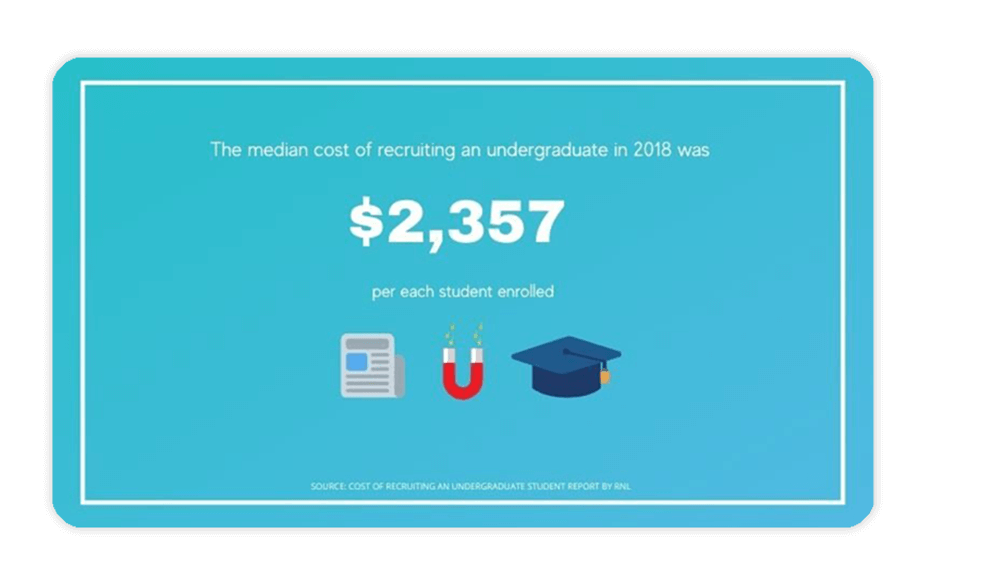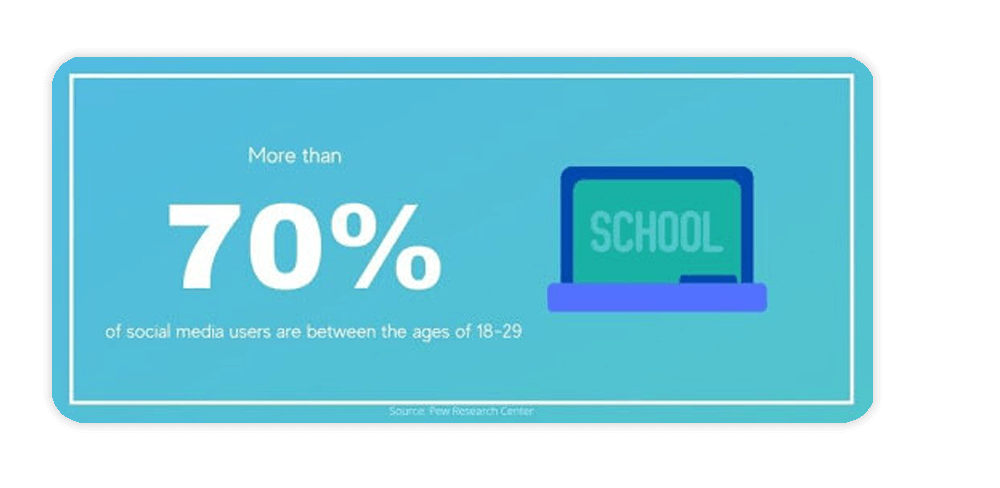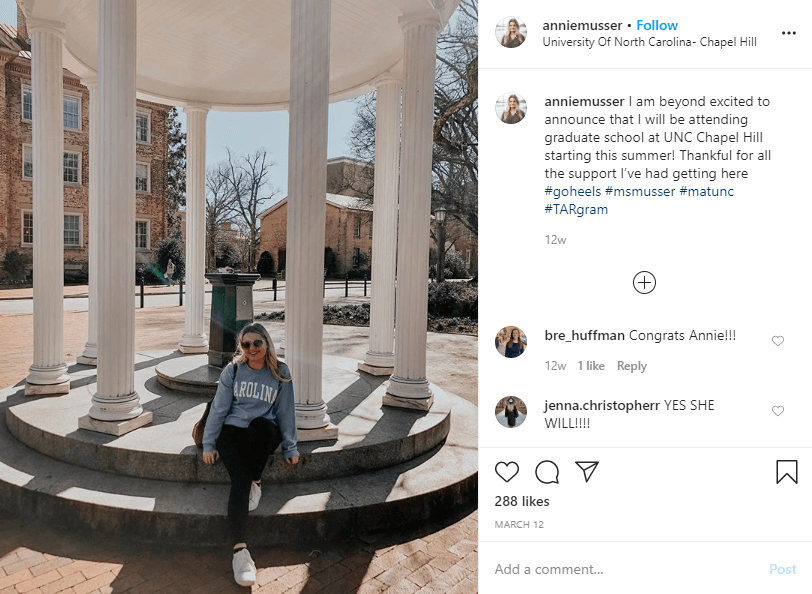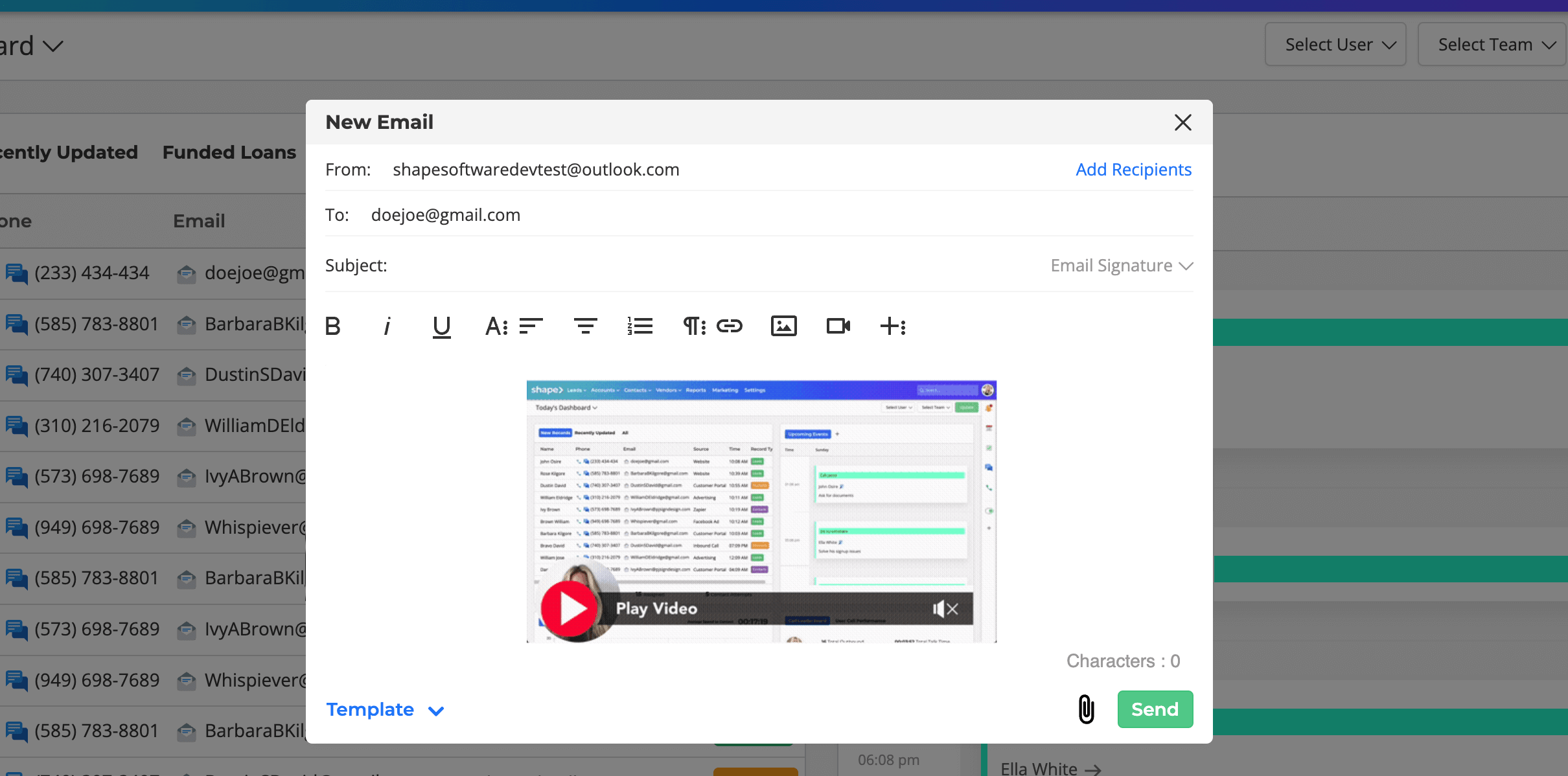Get started with Shape today!
All-in-one software for marketing, sales, customer service, CRM, and operations.
Share article
8 Marketing Strategies to Increase Student Enrollment
-
Shape Software
Enrollment numbers on the decline? Don’t put your school’s revenue at risk. Here’s everything you need to know to take your enrollment marketing to the next level, and secure more students for your higher education institution.
That no holds-barred quote is from Terry Flannery, vice president for communications at American University and CASE Treasurer. And while it may sound a little harsh at first, we think Terry hit the nail right on the mark.
If higher education marketers aren’t paying attention to enrollment issues, they are not paying attention to job one.
Terry Flannery
That no holds-barred quote is from Terry Flannery, vice president for communications at American University and CASE Treasurer. And while it may sound a little harsh at first, we think Terry hit the nail right on the mark.
Enrollment marketing is one of the biggest areas for improvement among colleges, trade schools and privately-owned universities, with only 34% of institutions reporting to have met their enrollment goals in 2017.
And while the recent crisis means that trade schools and private colleges will likely see a surge of interest from potential students, the competition will be fiercer than ever.
Let’s take a closer look at what works in enrollment marketing today by examining the leading student recruitment strategies, ideas and enrollment marketing platforms. We’ll also examine case studies from three different universities that were able to successfully reverse declining enrollment rates using a super smart enrollment marketing strategy.
Get Started Today!
Table of Contents
8 Marketing Strategies to Increase Student Enrollment at Your Higher Ed Organization
Request DemoWhat role does branding play in student enrollment?
Branding plays a crucial role in college enrollment as it helps to establish a strong and recognizable identity for the educational institution. A well-defined brand is the foundation of digital marketing strategy, attracting students by conveying your institution’s values, reputation, and unique offerings, ultimately influencing their decision to enroll.
How to increase student enrollment in university – A quick rundown
Students today are a more discerning bunch than How you advertise to them can vary depending on the specific target audience and the nature of the product or service being advertised. Students also cover a broader spectrum than ever before (from International students to mature students) so, if you want a better chance of reaching your student enrollment goals, your marketing and digital marketing strategies must be tailored accordingly.
Before we get into the a more in depth look at marketing strategies to increase student enrollment, here’s a quick rundown of some effective strategies for reaching current students (we’ll cover these in more depth later in the article).
- 1. Social media marketing – Students are highly active on platforms such as Instagram, Snapchat, and TikTok. Creating engaging content and running targeted ads on these platforms can help reach a large number of students.
- 2. Influencer marketing – Collaborating with popular student influencers who have a large following can help promote your product or service to their audience in an authentic and relatable way.
- 3. Campus events and sponsorships – Partnering with universities or student organizations to sponsor events or activities can provide exposure to a captive student audience.
- 4. Online forums and communities – Engaging with online communities where students gather, such as student forums or Facebook groups, can help spread awareness about your brand.
- 5. Student discounts and promotions – Offering exclusive discounts or promotions specifically for students can incentivize them to try your particular school or service.
Remember, it’s important to understand your target audience and tailor your advertising approach accordingly. Researching their preferences, interests, and behavior patterns can help you develop effective advertising campaigns that resonate with current students.
We won’t sugarcoat it: Higher education is an industry in flux.
Prior to the coronavirus epidemic, the average age for online students was 32 years old, and 68% of online students were experienced professionals. According to higher ed expert Seth Odell, this is set to change. “It is highly likely that we will see a dramatic increase in demand for fully online offerings from Gen Z,” says Seth.
But the rise of online isn’t the only change today’s college enrollment leaders need to keep up with.
Increasing financial pressure, paired with the rising cost of digital advertising means protecting your tuition revenue is now more important than ever.

The median cost of recruiting an undergrad in 2018 was $2,357 per student enrolled.
Today’s recruitment directors and admission heads must take new, innovative and calculated measures with their enrollment marketing to ensure every penny spent is effective in bringing you the right students.
1. Know your students
Before you do anything else with your college enrollment and student recruitment marketing, it’s crucial to learn as much as possible about your current students so you can understand who has the best chances of succeeding at your college.
Based on this research you can develop student personas. These are fictional representations of groups of students for you to target in your recruiting and enrollment marketing. Factors like, tastes, goals, interests, or whether they require financial aid, are all considered so you can tailor a digital marketing strategy accordingly.
A well thought out student persona helps you:
By taking the time to develop a customer persona for your ideal target students you also learn which platforms potential prospects use the most. Now you can allocate marketing resources more effectively and eliminate wasting time and money due to unnecessary guesswork.
One of the smartest ways to bring your enrollment strategy full circle is to integrate your SIS with a CRM platform designed to maximize revenues from both new and existing students.
With a deep SIS and CRM integration, you can see the direct connection between your most successful students, and how you recruited them in the past. Remember, the more successful students you have today, the more referrals you’ll have tomorrow.
If you’re a Shape user, you can easily give your admissions team access to key information from your SIS in real-time. Here’s how the integration works:
-
Record creation
A record is created in both systems when a new lead is added.
-
Status syncing
At certain milestones, the record is synced from Shape to the SIS for consistent information between systems.
-
Problem
An all-women university, Mount Mary was struggling with declining enrollment rates and looking for ways to reach a very specific target demographic: Gen Z women.
-
Solution
A thorough analysis helped Mount Mary identify a target customer persona, a young (18-24) woman living in the local area with Snapchat and Instagram as preferred platforms and mobile as their preferred device. The school’s marketing team then crafted a targeted brand message that was later broadcasted to the select audience via their preferred platforms.
-
Results
Within a matter of months, the enrollment marketing campaign accumulated 2.9 million impressions on SnapChat and 90,947 unique user views on Instagram.
2. Use socials to market your college the right way

In recent years, every article on education marketing tells you to use social media to attract students. This is hardly surprising:
Today, leveraging social media is one of the best practices for getting those enrollment numbers up. This is partly because 70% of social media users hit the sweet spot for college student demographics. Few digital marketing strategies yield better results for boosting student interest, your school’s visibility, brand awareness, and undergraduate enrollment.
However, there’s an important distinction between colleges that boast high traffic and engagement on social, and those that struggle to keep up.
If you’re in the latter camp, you should know it’s not your fault.
Many of us didn’t grow up with this technology, so it can be easy to simply rush to create a branded account on every platform, post once or twice a month, and call it a day.
But when it comes to college enrollment marketing, the default approaches to social media just won’t cut it.
Here are three crucial tips to help you use socials to enroll more students:
Every platform is a world of its own. What works on Facebook won’t work on Snapchat. If you’re new to this, we recommend picking no more than two social platforms to start with so that you can give each one your full focus.
These platforms release new features every month, bringing new opportunities for engaging future students. But be warned, there will be a learning curve with every new change or update.
This one is a deal-breaker. Stock photos and boilerplate memes don’t offer any real value to prospective students. Remember, you’re competing for your prospect’s attention and not just against other schools but also against content from influencers, brands, mainstream media, friends and more.
So, how the heck are you going to attract new students amid all the noise?
Start by learning everything you can about the kind of content that works on each platform—then consistently build your audience from there.

Honestly, it doesn’t really matter which platforms you decide to start marketing with first. The only thing that matters is how consistently you’re able to show up on that platform with quality content for your audience.
For example, the University of North Carolina at Chapel Hill has over 116,000 Instagram followers.
The school actively uses hashtag #TARgram to let students share their own stories about life on campus. This is a great way to redistribute some of the burden of content creation and let your students market your college for you in a way that feels more authentic for prospects.
But it’s not all about the ‘gram. The University of Michigan uses Pinterest to share research, program updates, and student life content, generating more than 1.2 million views every month, while Harvard’s Twitter account has more than 1 million followers.
Remember, there’s no one social media platform that is perfect for every university. Find the ones that work for your organization, and stick to it.
Already a Shape user? You can automatically trigger a personalized email to go out to any incoming inquiries from prospective students coming to your website from social media or other marketing channels.
3. Video marketing strategies to increase college enrollment
If you’re not using video content as a part of your enrollment marketing strategy, you’re missing out.
According to a report by Wyzowl, a whopping 68% of people prefer to learn about a product or service by watching a short video—which is probably just one of the reasons why, according to Dartmouth University, some have a presence on YouTube.
No matter which way you cut it, video marketing is one enrollment strategy that’s not going away anytime soon.
Video content provides two key benefits for private colleges and higher ed orgs.
College webinars, presentations, lessons, and interviews can all be easily repurposed into bite-sized content for further distribution across all your marketing channels. For example, simply record a video lecture, create a quick highlights reel and boom. Now, you have an Instagram story or Facebook video ad ready to go.
According to the Wyzowl report, 83% of marketers say video provides them with good ROI, and 81% claim video helped them generate leads.
And that ROI rate soars even higher when you use video in conjunction with other engagement tools, like email.
In fact, emails that contain video can increase your click-through rates by up to 300% and have a 96% higher click-through rate than plain-text emails.
If there is a segment of your database that hasn’t engaged in a while, a quick video email could be a great way to bring those conversations back to life.
In Shape you can easily integrate with video marketing tools like BombBomb to seamlessly add videos to your emails or even to your SMS messages, in just two clicks.


4. Optimize your school’s content marketing strategy
Even though teens prefer consuming video content on social media, you may be surprised to learn that on college websites, 64% of college prospects would rather consume content through text and articles.
Your website, ebooks, blog posts and other written resources must be top-of-the-line to win the hearts and minds of future students.
Here are three core areas to focus on to take your content marketing efforts to the next level:
-
Search engine optimization (SEO)
If you’re a trade school or privately owned university, optimizing for local searches remains one of the best ways of attracting prospects. For example, searchers looking for ‘best trade schools in Austin’ are probably likely to enroll soon. It could be worth hiring a digital marketing agency to optimize all your content for Google search engines.
-
Website user experience
Make sure your website is as intuitive and easy to navigate as possible so potential students won’t have a hard time finding more information or knowing exactly what to do to take the next steps. If you’re not sure which parts of your website need work, use a free or low-cost usability tool to test it.
-
Conversion rates
Whether deliberately or not, your website is a conversion tool. Optimize your CTAs and track bounce rates to make sure you’re converting as many visitors as possible.
-
Problem
North American Trade School (NATS) faced eroding ROI from traditional media marketing campaigns and was looking for new ways to attract student prospects.
-
Solution
After implementing an SEO audit, the NATS’s marketing agency upgraded a large portion of the school’s website content, including both blogs and landing pages. They also added clear CTAs and testimonials to raise the authority of every page and encourage visitors to take the next step.
-
Results
Organic visits increased by 66%, while the amount of completed applications on key pages increased by 106%.
5. Go mobile with your enrollment marketing
Almost 75% of Gen Z’ers use smartphones more frequently than any other device and nearly 50% of all web pages on the internet are viewed via a mobile phone.This means mobile optimization must be one of your chief marketing ideas for school admission.
With hundreds of intuitive apps and website builders that make mobile optimization as easy as ABC, there’s no longer any excuse for a poor mobile experience.
Already got a mobile-optimized website for your school? Cool!
Here’s what you can do to instantly connect with potential students as they browse your school’s website:
-
First, optimize your website for mobile experience
If you haven’t done so already, make sure your website is responsive across all mobile devices.
-
Double down on text marketing
SMS messages have a whooping 98% open rate. Once prospects opt into receiving messages from your organization, use a well-timed automated text message contact strategy to help move them toward the next step.
In Shape, you can easily track all your phone and SMS outreach in one simple place. Just head to your Phone Settings dashboard to enable your SMS settings.
6. Don’t underestimate email
Email may sound a little dated after all this talk about social media and video ads, but when it comes to the best college recruitment strategies, email still matters.
In fact, 76% of high school students say they prefer to hear from universities via email, rather than messaging apps, phone calls, or direct mail.
With a simple (but powerful) combination of email messages and phone calls, online education provider Stafford Global turned their website into a high-performance admissions machine, increasing the number web leads by 50%, while shortening their conversion time by 58%.
Want to replicate those results?
A few tips your higher education institution can use to get the most out of email marketing:
Even a small personalization in your subject line can increase open rates by 50%. With a smart higher ed sales platform, you can take it a step forward and personalize entire sections of your emails based on prospect data such as study areas of interest, in-state vs. out-of-state, etc.
Don’t overload your SMTP provider by sending thousands of emails using the same mail server. Make sure your CRM system allows you to stay compliant and distributes the workload between multiple servers.
With smart automation you can send hyper-personalized email messages throughout all stages of the student recruitment and application process, making sure your university is in constant contact with every prospect at every step of the enrollment journey.
Not sure you’re working with the right enrollment tools? Check out our Complete Buyer’s Guide for Choosing a Higher Education CRM
Shape users can easily customize, schedule and send emails based on the status of each and every prospect in your database. Or, you can customize a done-for-you email from our rich library of over 100+ proven email templates.
7. Know your enrollment marketing numbers
Enrollment marketing is no longer a game of chance.
According to the Cost of Recruiting an Undergraduate Student Report by educational enrollment agency RNL, the median cost of recruiting an undergraduate in 2018 was $2,357
And every ineffective marketing decision pushes that number higher.
To secure cost-effective tuition revenue, you need to know which marketing channels work best so you can keep your recruitment efforts focused and efficient. With the right data at your fingertips, you’ll always know who your ideal students are, where to find them, and how to effectively recruit them without breaking the budget.
Here are a few ways to make sure your enrollment marketing decisions are data-driven:
-
Analyze your website traffic
Learn about your most effective sources of traffic to scale successful online marketing campaigns and drop the ineffective ones.
-
Focus on the right metrics
It’s easy to get lost in the amount of data you can track. Focus on conversion and enrollment rates, not Facebook likes.
-
Use a higher ed CRM system
The right CRM system will show you in one place all the data you need to effectively convert prospects into students and constantly improve the efficiency of your recruiters.
The right higher ed CRM will let you instantly visualize your student enrollment success across marketing channels so you know how to make the most of your recruitment budget.
8. Boost enrollment with AI and virtual experiences
AI, virtual reality, chatbots—higher ed marketing innovation may seem like an overwhelming or costly thing to break into. But in reality, there are many platforms that will do the heavy lifting for you.
Here are just a few ways to take your enrollment strategies up a notch:
- Live streaming
- Virtual reality
- Augmented reality
- Interactive videos
- Chat bots
In one standout example, the Savannah College of Art and Design let students explore the campus virtually using Google Cardboard headsets, which led to a 26% increase in admissions.
And using AI-powered chatbots, Georgia State University was able to boost graduation rates by 23%, while Bethel University increases retention rates by 4%.
-
Problem
Hawkeye Community College at Iowa wanted to reverse an ongoing trend of declining student enrollment that had lasted several semesters.
-
Solution
As part of several enrollment marketing initiatives, the college invested in a CRM system, which allowed their admissions team to keep all the recruitment data in one place and communicate more effectively with interested prospects.
-
Results
Hawkeye reversed a multi-year enrollment decline, saw a nearly 5% increase in headcount and a 1.2% increase in credit hours, all within just one year.
Want to be the next enrollment marketing success story?
That wraps up our in depth guide to marketing strategies to increase student enrollment! It’s hard to keep up with the constantly changing trends in marketing, higher education, and student lifestyle, and the truth is what worked mere months ago may no longer work tomorrow. Don’t let it overwhelm you.